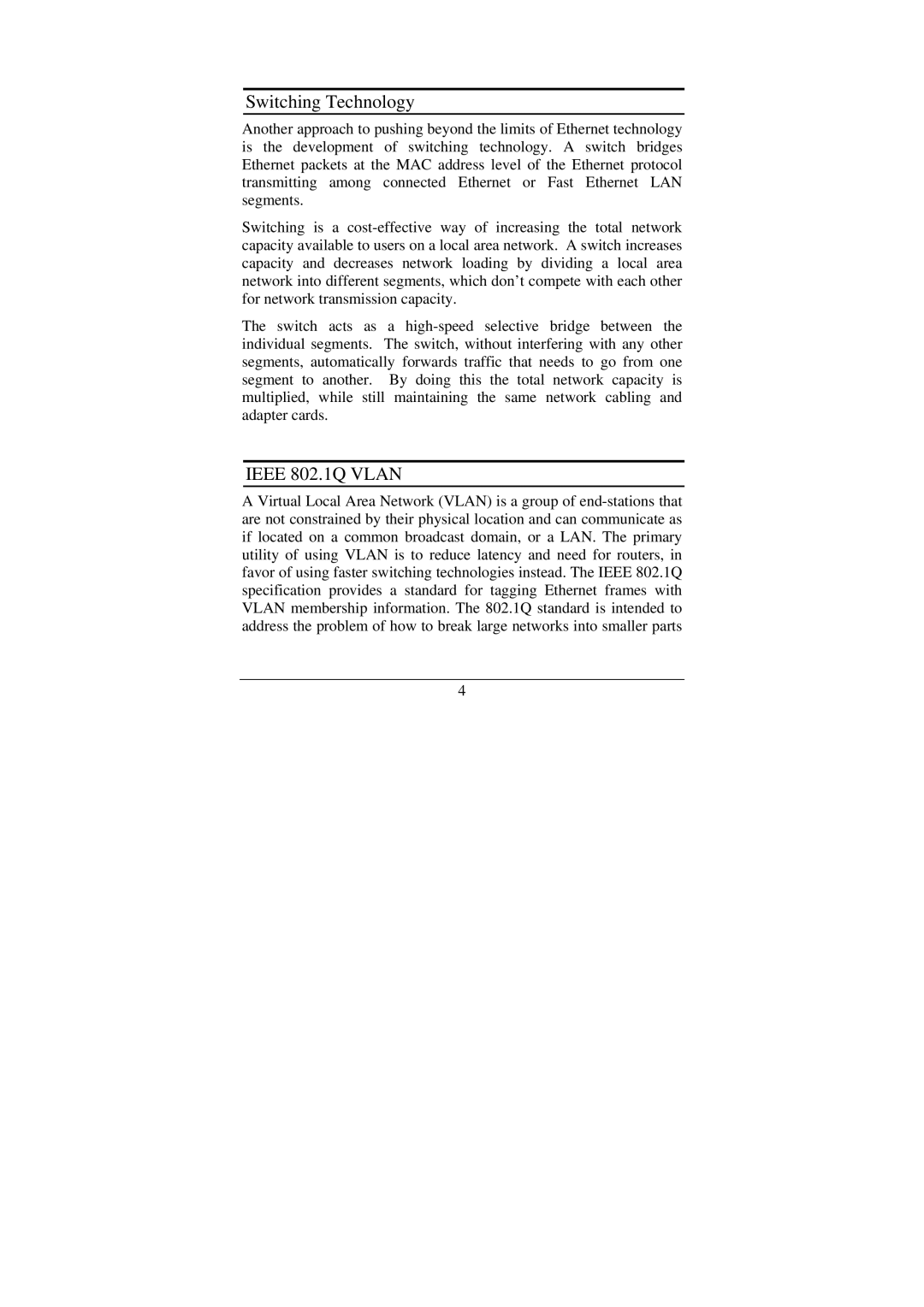Switching Technology
Another approach to pushing beyond the limits of Ethernet technology is the development of switching technology. A switch bridges Ethernet packets at the MAC address level of the Ethernet protocol transmitting among connected Ethernet or Fast Ethernet LAN segments.
Switching is a cost-effective way of increasing the total network capacity available to users on a local area network. A switch increases capacity and decreases network loading by dividing a local area network into different segments, which don’t compete with each other for network transmission capacity.
The switch acts as a high-speed selective bridge between the individual segments. The switch, without interfering with any other segments, automatically forwards traffic that needs to go from one segment to another. By doing this the total network capacity is multiplied, while still maintaining the same network cabling and adapter cards.
IEEE 802.1Q VLAN
A Virtual Local Area Network (VLAN) is a group of end-stations that are not constrained by their physical location and can communicate as if located on a common broadcast domain, or a LAN. The primary utility of using VLAN is to reduce latency and need for routers, in favor of using faster switching technologies instead. The IEEE 802.1Q specification provides a standard for tagging Ethernet frames with VLAN membership information. The 802.1Q standard is intended to address the problem of how to break large networks into smaller parts
4

